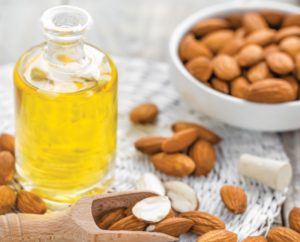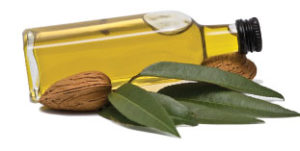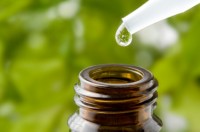Understanding Hydrosols and Essential Oils
© Originally published in Dermascope online magazine: http://www.dermascope.com/wholistic/understanding-hydrosols-and-essential-oils
Many aestheticians and spa owners today are looking to new trends and technology to increase their client base and services. In light of the growing organic lifestyle preferences, why not look to ancient remedies. as well? Aromatherapy and treating ailments with essential oils is a practice thousands of years old that has seen a resurgence of popularity in the last few decades. A lesser-known component of the essential oil making process is called a hydrosol.
Many have never heard of hydrosols or may have confused them with cheaper, adulterated versions of flower waters. Incorporating natural hydrosols and essential oils into salons or spa treatments can offer exciting, new options to clients and increase revenue streams.
WHAT IS A HYDROSOL? 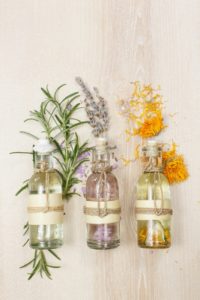
Hydrosols are the condensate result of steam distillation of plants or flowers produced when creating a natural essential oil. The top floating layer of essential oil is removed and the remaining 90 percent of the water is considered hydrosol.
Hydrosol is a chemistry term meaning “water solution.” In Latin, “hydro” – meaning water – and “sol” – meaning solution. The terms “hydrosol” and “herbal distillates” are most common to the United States. In France, the top producer of modern fragrances, the term changes to “hydrolait,” meaning water-milk. The terms, floral water, herbal water, toilet water, and aqua vitae are commonly interchanged with hydrosol — but, beware. The two products can differ vastly depending on the producer. A pure hydrosol will be solely plant-based and food grade — meaning edible. Typical floral waters you may find in supermarkets, drug stores, or ethnic food shops may contain non-organic ingredients such as alcohol, chemically produced fragrance or man-made food dyes. Most often they are infused with essential oils —which is not the same thing as a true hydrosol. Pure hydrosols will contain some of the same aromatic molecules as essential oils but in a much lower concentration. They are typically clear and colorless and have a light, trace aroma of the original plant or flower.
Hydrosol pH
Data on hydrosol pH varies, but most can be found in the 3 to 7 range; three being more acidic and seven being close to neutral, depending on the plant used. Additionally, being organic, a true hydrosol will not have the extended shelf life of a formulated floral water and can turn rancid or lose its scent after a time. It is always a best practice to refrigerate any pure natural skin care products the same way food would be refrigerated, and check frequently for color and scent changes. Hydrosols with a pH under 5.0 should last up to two years and over 5.0 pH will be good for 12 to 18 months.
HISTORY
There is evidence of essential oil distillation as long as 5,000 years ago. As stills developed over time, the distillation process became more efficient and more common. One very famous compound or co-distillate was “Eau de Me`lisse de Carmes” or Carmelite water. This recipe dates to sometime between the 14th and 17th centuries and is still shared amongst herbalists today.
According to Washington botanist Ann Harman, “Though sources disagree on the origin of this distillate, many agree on its medicinal value and ingredients. It included lemon balm, angelica root, nutmeg, lemon peel, cloves, and coriander seed, distilled in orange water and (grape) spirits. It was sold for centuries, which seems to indicate its value as medicinal water. There are literally hundreds of recipes for waters and their uses up to the late 1800s. Many were included in the official pharmacopoeias of the time.” Over time, these natural medicinal waters were forgotten and not commonly used in standard cosmetic brands due to the sheer amount of plant-based materials that would be required and shelf life concerns.
METHODS OF APPLICATION
Today, hydrosols and essential oils are most commonly used in natural or organic skin care treatments and aromatherapy practices.
True hydrosols should be considered essential oil distillates that are pure and natural, and only distilled from non-sprayed plant material and contain no additives. For some plants that are highly prone to fungus or bacteria, a very small amount of natural food grade preservative may be used. As such, they can safely be incorporated into many spa and facial treatment options. Again, remember to always refrigerate any organic or plant-based products to keep them from spoiling.
Pure hydrosols can be made from any number of flowers or plant leaves such as roses, peppermint, orange blossoms, and lavender. They can be used in just about anything cosmetic or edible, including lotions, toners, lip balms, tinctures, room sprays, and even cocktails or desserts!
Essential Oils
The highest quality essential oils come from the same steam distillation process that produces the hydrosol. Steam-distilling is an intensive process that requires many pounds of a plant product. For instance, over 60,000 freshly picked roses will yield only one ounce of pure rose essential oil.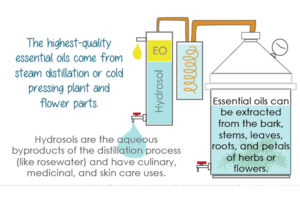
Pure essential oils can also be formed by cold pressing or water distilling plant and flower parts. They can be extracted from the bark, stems, leaves, roots, and petals of herbs or flowers. Distilled essential oils have been employed as medicines or topical treatments since the invention of distillation in the 11th century. The shelf life for most essential oils is about 12 months.
Due to the large amounts of plants used to produce small amounts of oil, essential oils should never be ingested. In contrast, hydrosols are much less potent and contain a much smaller portion of volatile oils as wells as trace organic compounds not found in the oil. They can be incorporated into a myriad of treatment options with much less risk. For internal or food-based uses, confirm if any preservatives have been used before ingesting.
Every liter of hydrosol contains between 0.05 and 0.2 milliliter of dissolved essential oil. For instance, herbal tea’s water to plant ratio is only 0.08 to 1 while hydrosols are at a ratio of 1 to 1 and can be considered a “supercharged” version of tea. In contrast, a pure essential oil will be 80 to 100 percent pure plant oil, sometimes infused in a carrier oil like sweet almond oil or jojoba, but containing no water.
TRADITIONAL AND SPA USES
Hydrosols are extremely versatile when used externally — from facial toners and masks, to compresses or hair rinses, and body lotions or room sprays. Some of the most commonly used fragrances are orange blossom, lavender, rose, rosemary verbenone, lemon balm, peppermint, geranium, and roman chamomile. Spa treatments can incorporate hydrosols into all phases of facials – from steaming to toning to mixing dry facial masks, as well as baths and full body steams.
Neroli (citrus aurantium), also known as orange blossom, is a fruity-floral with uplifting hints of citrus. It has astringent properties that are beneficial for oily skin. It naturally tightens and tones skin while reducing the size of pores. It is antifungal, antibacterial, and anti-inflammatory and can be an effective treatment for acne, rosacea, and inflamed skin. Neroli can also be used for cooking. Middle Eastern cultures have used orange blossom for centuries in their sweets, sorbets and beverages. Add a few aromatic drops to an herbal tea for clients to enjoy.
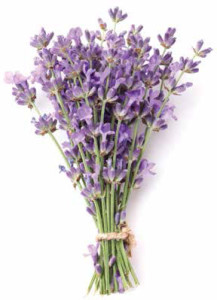
Lavender (lavandula angustifolia) is a popular essential oil and may already be a part of spa or facial treatment options. Lavender oil is considered “universal” for its calming, healing, and antiseptic properties. Add a new dimension by including this floral astringent hydrosol in new ways. Lavender hydrosols are good for every skin type. It has a pH level of 4.5, which is just above neutral. It has cooling properties that help heal heat rash, sunstroke, and burns. Add lavender hydrosol directly to cotton pads as a refreshing toner or combine with chamomile to alleviate rashes. Relieve tension headaches and stress by adding it to a cold compress. Another use is to add half a teaspoon of lavender hydrosol to hot or iced tea for a refreshing zing.
Scents of orange and lavender can also be used as room aromatics or spritzers to help to reduce anxiety and improve client’s mood.
For stiff muscles, aches and pains, add peppermint (mentha piperita) hydrosol to a hot or cold body compress during a massage treatment. Peppermint has many beneficial properties –internally and externally – including stimulating digestion, reducing motion sickness, treating bad breath, reducing acne, and detoxifying the liver. The aroma of peppermint has been shown to enhance memory and increase alertness.
Rose (rosa damascena) hydrosol is a gentle balancer internally and an excellent humectant for dry, mature skin. It is gentle enough to be used directly as a soothing facial spritzer or toner to reduce inflammation and redness. It can also be combined with other skin-healing hydrosols such as chamomile and lavender. For added astringent properties, add two parts witch hazel.
Instead of champagne or wine, treat clients to a fun, fizzy drink. Gently heat the preferred hydrosol over low heat and add a little bit of honey (to taste). Mix half-part hydrosol to mineral water or sparkling soda and stir it until mixed. Add ice and a fresh sprig of mint, orange, or a lemon slice as a garnish.
As with any natural or organic products, it is advisable to only purchase hydrosols from a qualified herbalist and certified organic farm or distiller. Always check for quality and know botanical names to ensure safety and efficacy.
Written by Rachelle Dupree, marketing, communication, and design for Vivoderm Natural Skincare © Dermascope Magazine, December 2017





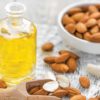
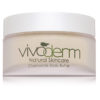 You can find almond oil in many natural skincare products today. Vivoderm uses Almond Oil in most of its natural facial lotions and body creams. The Vivoderm Chamomile Body Butter is a thick, rich all-over skin hydrator, perfect to protect your skin against for the cold, dry weather of winter.
You can find almond oil in many natural skincare products today. Vivoderm uses Almond Oil in most of its natural facial lotions and body creams. The Vivoderm Chamomile Body Butter is a thick, rich all-over skin hydrator, perfect to protect your skin against for the cold, dry weather of winter.
